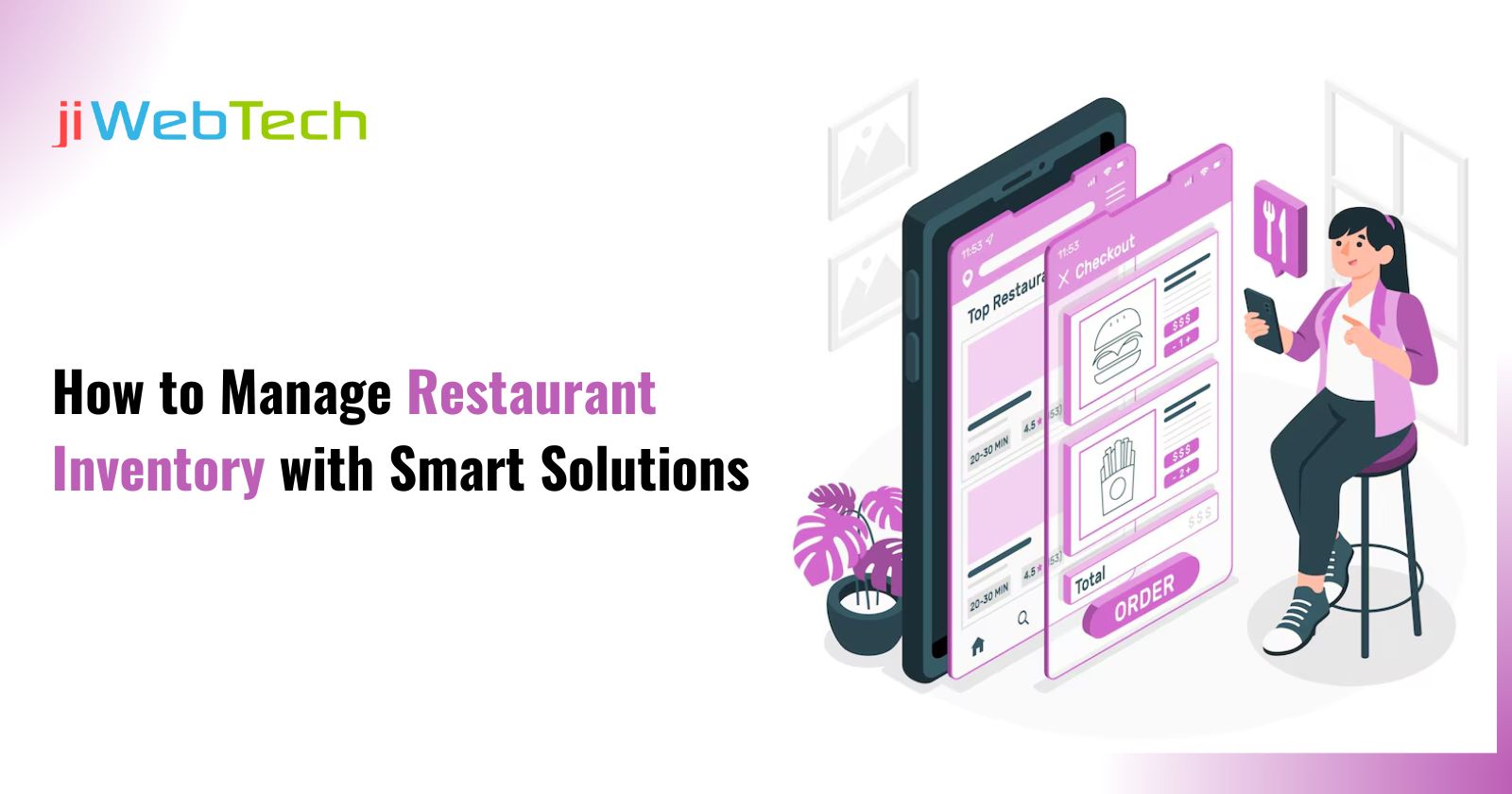Managing restaurant inventory efficiently is crucial for smooth operations and cost savings. Traditional methods of inventory tracking are time-consuming and prone to errors. However, smart solutions powered by advanced technology help streamline inventory management, reducing waste, improving accuracy, and optimizing stock levels. In this blog, we explore how restaurant owners can leverage smart solutions for efficient inventory management.
Challenges in Restaurant Inventory Management
Restaurants face several challenges when it comes to inventory management, including:
Inaccurate stock tracking: Manual tracking leads to discrepancies, causing overstocking or shortages.
Food wastage: Expired or unused ingredients increase operational costs.
Complex supply chain: Managing multiple suppliers and ensuring timely deliveries is challenging.
Theft and pilferage: Unauthorized use of inventory affects profitability.
Time-consuming processes: Traditional methods require excessive time and effort, impacting overall efficiency.
To overcome these challenges, restaurants need smart inventory management solutions.
Smart Solutions for Efficient Restaurant Inventory Management
1. Cloud-Based Inventory Management Software
Cloud-based restaurant management solutions, like the one offered by jiWebTech, enable restaurant owners to manage their inventory from anywhere. These solutions provide real-time updates on stock levels, helping managers make informed purchasing decisions and reducing the risk of stockouts or over-purchasing.
2. Automated Stock Tracking
Smart inventory solutions come with automated stock tracking features that record stock levels whenever a purchase is made or an ingredient is used. This automation reduces human errors and ensures that restaurant managers always have an accurate count of available inventory.
3. Integration with Point of Sale (POS) Systems
Integrating inventory management with a POS system allows restaurants to track sales and automatically update stock levels. This feature helps restaurants understand which items are selling the most and when to reorder supplies, reducing wastage and optimizing purchasing decisions.
4. Predictive Analytics for Better Forecasting
Using AI-powered predictive analytics, restaurant owners can forecast demand based on historical sales data. This helps in planning purchases more efficiently, ensuring that essential ingredients are always available without unnecessary overstocking.
5. Supplier Management and Automated Ordering
A smart inventory solution allows restaurant managers to maintain a supplier database and automate purchase orders. This ensures timely replenishment of stock while securing the best deals from suppliers, improving cost efficiency.
6. Food Waste Reduction Strategies
Smart solutions provide insights into ingredient usage patterns, helping restaurants minimize food waste. Features like expiry date tracking and portion control ensure that food is used efficiently, leading to cost savings and sustainability.
7. Multi-Location Inventory Control
For restaurant chains, managing inventory across multiple locations is challenging. A centralized inventory management system allows managers to monitor stock levels at different branches from a single dashboard, making transfers between locations seamless.
8. Mobile Accessibility for On-the-Go Management
With mobile-friendly inventory solutions, restaurant owners and managers can track and manage inventory from their smartphones. This flexibility ensures real-time decision-making and improved efficiency, even while offsite.
Benefits of Using Smart Inventory Solutions
Time-saving: Automation reduces manual work, allowing staff to focus on core restaurant operations.
Cost efficiency: Optimized stock levels prevent overstocking and minimize food waste.
Improved accuracy: Reduces errors associated with manual stock tracking.
Enhanced productivity: Simplifies ordering and tracking processes, improving overall efficiency.
Better customer service: Ensures that ingredients are always available, preventing menu item unavailability.
Conclusion
Efficient inventory management is essential for running a profitable and successful restaurant. By implementing smart solutions like jiWebTech offers the best restaurant management solution that helps you manage your restaurant chains from a single place, thus reducing the workload and stress of the restaurant manager. Restaurant owners can streamline operations, reduce waste, and enhance overall efficiency. Investing in the right technology simplifies inventory tracking, ensuring better financial control and a seamless dining experience for customers.
Upgrade your restaurant’s inventory management today with smart solutions and take your business to the next level!
FAQs
1. What is restaurant inventory management?
Restaurant inventory management involves tracking and controlling the stock of ingredients, supplies, and other items needed to run a restaurant. It ensures you have the right amount of inventory to meet demand without overstocking or wasting resources.
2. Why is smart inventory management important for restaurants?
Smart inventory management reduces food waste, lowers costs, prevents stockouts, and improves operational efficiency. By using technology and data-driven solutions, restaurants can optimize purchasing, streamline operations, and boost profitability.
3. What are some smart solutions for managing restaurant inventory?
Smart solutions include:
Inventory Management Software: Tools like Toast, Upserve, or MarketMan to track stock levels in real-time.
Barcode Scanning: Use scanners to log inventory quickly and reduce manual errors.
Automated Reordering: Set up systems to reorder items when stock reaches a certain threshold.
Cloud-Based Platforms: Access inventory data remotely for better decision-making.
IoT Devices: Smart scales and sensors to monitor perishable items and alert for spoilage risks.
4. How can I reduce food waste with inventory management?
To reduce food waste:
Implement First-In, First-Out (FIFO) to use older stock first.
Track expiration dates with software alerts.
Analyze sales data to forecast demand accurately and avoid overstocking.
Use portion control and standardized recipes to minimize excess preparation.
5. How do I start using smart inventory management in my restaurant?
Follow these steps:
Assess Current Processes: Identify inefficiencies in your existing inventory system.
Choose the Right Software: Select a tool that fits your restaurant’s size and needs.
Train Staff: Ensure employees are comfortable using the new system.
Integrate with POS: Connect inventory software with your point-of-sale system for seamless tracking.
Monitor and Adjust: Regularly review reports to optimize inventory levels and processes.
6. What are the benefits of using inventory management software?
Benefits include:
Real-time tracking of stock levels.
Reduced human errors in counting and ordering.
Detailed reports on inventory trends and costs.
Integration with suppliers for faster reordering.
Improved accountability with staff access controls.
















Share this post on: